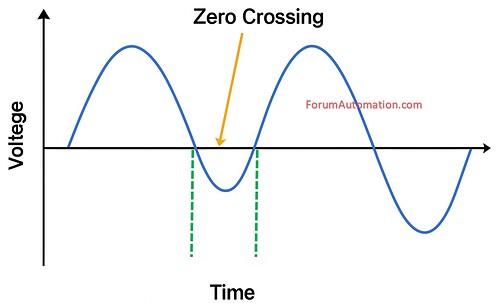What is Voltage Zero Crossing?
Voltage in an alternating current system varies sinusoidally between positive and negative values.
Zero Crossing occurs when the voltage waveform goes through the zero line (positive to negative or vice versa).
To reduce electrical stress and harmonics, many power electronics devices (such as inverters, relays, and dimmers) switch with zero crossing points.
Zero crossing is also useful in synchronization (such as connecting generators to the grid).
In simple terms, it is the approximate time at which the polarity of the alternating current voltage changes.
You can also follow us on AutomationForum.co, Facebook and Linkedin to receive daily Instrumentation updates.
You can also follow us on ForumElectrical.com , Facebook and Linkedin to receive daily Electrical updates.
